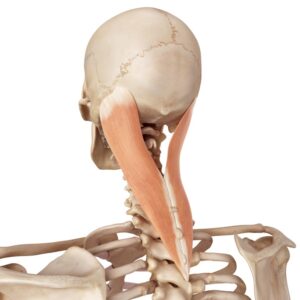Are you looking for a simple, magic stretch you can do daily to finally fix your posture? Sorry to disappoint you, but that doesn’t exist.
Whether you want to stop back pain, tightness in your neck, or simply look and feel better, getting rid of hunchback posture is possible.
To be honest with you, the road to a healthy and strong looking posture is pretty simple, but it isn’t easy.
To improve your posture, you have to attack muscular imbalances with strength and mobility exercises. Some half-hearted rehab exercises for seniors won’t be enough, you have to really work out consistently.
Along the way, certain lifestyle habits and tools can assist you, but they won’t supplement exercise.
If you are serious about improving your posture, you are guaranteed to succeed by following our 7-step plan. Just be patient, consistent, and put in the work.
Table of Contents
1. Understanding Posture
Before jumping into the action, you have to understand the main concepts of posture.
Posture is the alignment and positioning of your body at any given moment.
Having a good posture means you have the ability to maintain your spine in a neutral position with minimal stress on joints and tissues.
This is especially important under load, for example when you lift heavy objects.
Conversely, having bad posture means not being able to maintain your spine in a neutral position for prolonged periods under stress.
Bending the spine is not bad posture. While you want to avoid bending your spine under load, moving and bending your spine in everyday life is necessary to use your body properly. Regular spinal movement ensures that it maintains its natural ability to be mobile and flexible.
Therefore, good posture does not mean that you move like a stick but that you have the ability to stabilize your upper body. Rounding your spine is normal and healthy, as long as you don’t constantly slouch forward.
However, when a rounded back and shoulders become your default position and you have a hard time to remain upright, you have poor posture.
2. Assessing Your Posture
To achieve a balanced posture, it’s crucial to first understand where you’re starting from. Recognizing your own postural habits requires some self-awareness.
Posture is nothing static. Therefore, a lot of “posture assessment” techniques, like looking at yourself in the mirror from a side view, don’t really work. They are only a momentary image of your body position.
Moreover, they are unnatural. While trying to assess your posture, you consciously focus on it. In everyday life, you don’t think about it. Therefore, your posture is probably different during the assessment, compared to how you would normally stand.
A better way of assessing your posture is to observe your everyday behavior. When you stand or walk, which position does your body naturally take? Is it open, with a neutral spine and a stable core? Or are you hunched over with a rounded spine most of the time?
Another way to figure out if you need to work on your posture is looking at pictures of you. If you cringe at your posture in almost every image, it’s a signal that you probably have a similar body position throughout the day.
Lastly, you can ask people you trust for their honest opinion. Do they notice that you have a rounded, slouched posture most of the time? Then it’s probably worth working on it.
3. Fundamentals of Having a Strong Posture
Improving your posture is not about “sitting up straight” or “pulling back your shoulders”. It’s a complex process that involves strengthening, balancing, and increasing the mobility of certain muscles.
Eliminating Muscular Imbalances for Better Posture
Muscle imbalances can pull your body out of whack. For instance, if your back and rear shoulder muscles are weak in comparison to your shortened chest muscles, you’re likely to slump forward.
This effect is even stronger if weak glute muscles and tight hip flexors pull your pelvis into a compromised position. Then, your upper body sits on an unstable foundation to begin with.
Reversing this is pretty straight forward: Strengthen weak muscles and mobilize tight ones.
The Role of Core Strength
Core strength is another main pillar of good posture.
Your core isn’t just your abs, or lack thereof — it includes your entire torso.
These muscles all around your mid section play a crucial role in keeping a solid hip position and stabilizing your spine in a neutral position.
Therefore, a strong core is essential to a stable posture.
Importance of Mobility
A healthy level of mobility is also very important. If you lack mobility anywhere, your spine is one of the first body structures that compensate for it.
For example, if you have shortened hamstrings, you might not be able to pick something up off the ground without rounding your back.
Mobility issues like this will influence your posture in a bad way and result in issues with keeping your spine neutral.
4. Exercises for Better Posture
Exercising is the most important part, by far. Without addressing muscular imbalances and core strength, you will not fix your posture.
This is the main mover!
Incorporating a routine with specific exercises will directly impact your ability to maintain proper posture throughout the day.
Targeted workouts strengthen the muscles that support your spine, leading to better alignment and reduced discomfort.
Strength Exercises
Having a good strength level is crucial for maintaining a healthy posture.
Strengthening your core is essential for good posture. It’s the foundation that supports your spine, neck, and shoulders.
Choose core exercises that focus on creating core stability rather than movement, like suitcase carries.
It is also important to strengthen your back, neck, and the back of your shoulders to address muscular imbalances pulling you into a forward rounded posture.
Rows, isometric neck holds and reverse flies are great exercises for that.
Also, don’t neglect your rotator cuffs.
Your glutes, hamstrings, and even calves are very important to create a stable foundation for your pelvis, on which your upper body sits. Without a stable foundation, the whole structure is weak.
You can address those with clam shells, Romanian deadlifts — which also are excellent for improving core stability and practicing your hip hinge — and calf raises.
Dynamic Mobility Exercises
Regularly training your mobility is also important. Limited range of motion, especially in the shoulders, hips, and even ankles contributes to poor posture.
Moreover, including mobility exercises in your routine helps you get rid off the feeling of stiffness and discomfort.
Living a modern, mostly sedentary lifestyle, most joints in your body probably don’t move through their full range of motion very often.
Maintaining mobility follows a simple rule: Use it or lose it.
Static Stretches
Static stretches also have a place in your posture improvement routine.
They allow you to focus on lengthening the shortened muscles that contribute to pulling you into a compromised posture.
The most important stretches for posture improvement target your hip flexors, quads, hamstrings, and pecs.
5. Healthy Habits for Posture
Developing healthy habits can make a big difference in reinforcing a strong posture in your life.
Awareness and Mindfulness for Posture
Being aware and mindful of your posture throughout the day is a good start. However, it is important to find a healthy balance.
You don’t want to be obsessive about it. Remember that your spine and body need movement and exposure to different positions to stay mobile.
But you should try to make a neutral spine position your default posture. Especially when putting load on your spine — for example while carrying something heavy — you need to keep your back in alignment.
Learning to Hip Hinge
Hinging at the hip is a fundamental skill that everybody intuitively learns as a toddler and then forgets as an adult.
It is the action of bending your upper body forwards by moving back your hips. Your spine stays stable and doesn’t bend.
Deadlifts are a great exercise to practice hip hinging.
Whenever you bend down to pick something off the floor or access the bottom drawer, don’t round your back.
Instead, do a deadlift. Brace your core, keep your spine straight, drive your hips back and bend your legs to reach down.
In the beginning, this will feel unnatural and require a lot of focus. But soon, you will get used to it and automatically protect your back in everyday life without thinking about it.
Reduce Sitting Time and Move Regularly
Your body was not designed to sit in a chair for hours every day. But that’s probably what you do.
You have already heard about having a good sitting posture. Here is the problem with that: The gluteus muscles in your butt aren’t active while sitting on them. But they play a crucial role in assisting your core in maintaining a neutral spine.
By sitting for prolonged periods, your spinal erector muscles become tired and can’t hold your body upright after some time. Eventually, you’ll slouch forward.
This is not necessarily bad because there is not a lot of pressure on your spine while sitting, meaning you can move and bend your spine without worries.
The problem is when you sit in a rounded position all day, every day. Then this hunched over posture pattern reinforces itself.
The solution is not to try and sit perfectly straight all day but to frequently change sitting positions, allowing certain muscles to rest and introducing some spinal movement. Or even better: To sit less!
In this day and age, you can’t eliminate sitting. But you can try to reduce it as much as possible.
If you spend a lot of time seated, take frequent brakes. Simply get up and move your body around to prevent feeling discomfort and tightness.
Incorporating longer walks in your day is also a good idea to counter the effects of prolonged sitting. Plus it’s healthy for your heart and mind.
6. Tools to Assist in Posture Improvement
If you’re looking for tools you can buy to fix your posture, they don’t exist — although some make false promises to fix your posture.
You have to put in the work and exercise. There is no way around that.
However, there are some tools that can assist you on the way to establish a healthier posture.
Upgrading your office with a standing desk, for example, is a great way to reduce sitting time and maintain an active posture while working.
7. Start Your Posture Improvement Exercise Routine
To improve your posture, it’s essential to have a structured exercise plan that focuses on consistency and gradually increases in difficulty.
You need to incorporate strength and mobility exercises, addressing all the underlying causes of poor posture.
It isn’t rocket science but it is really challenging to find the exercises that attack every issue effectively. And then, to put all of them together intelligently into a scalable workout program.
Luckily, we have done that work for you.
Our 90-day workout program with 46 different strength and mobility exercises is built to do one thing: improve your posture.
If you’re serious about fixing your posture and you’re willing to follow a proper exercise program, doing four training sessions per week, this program is for you. Get started today!












